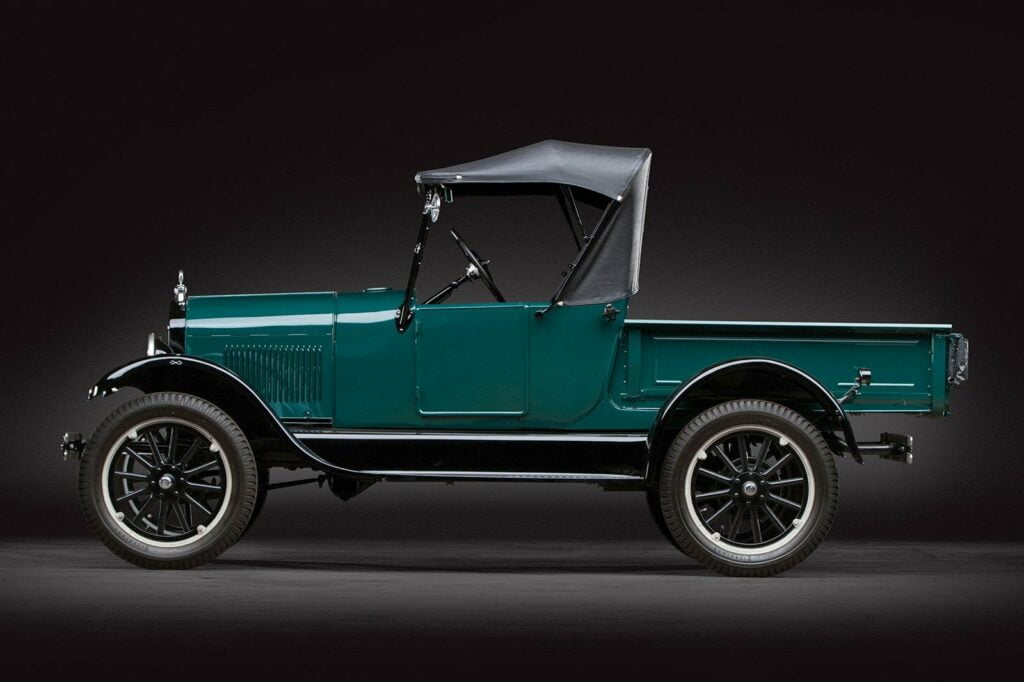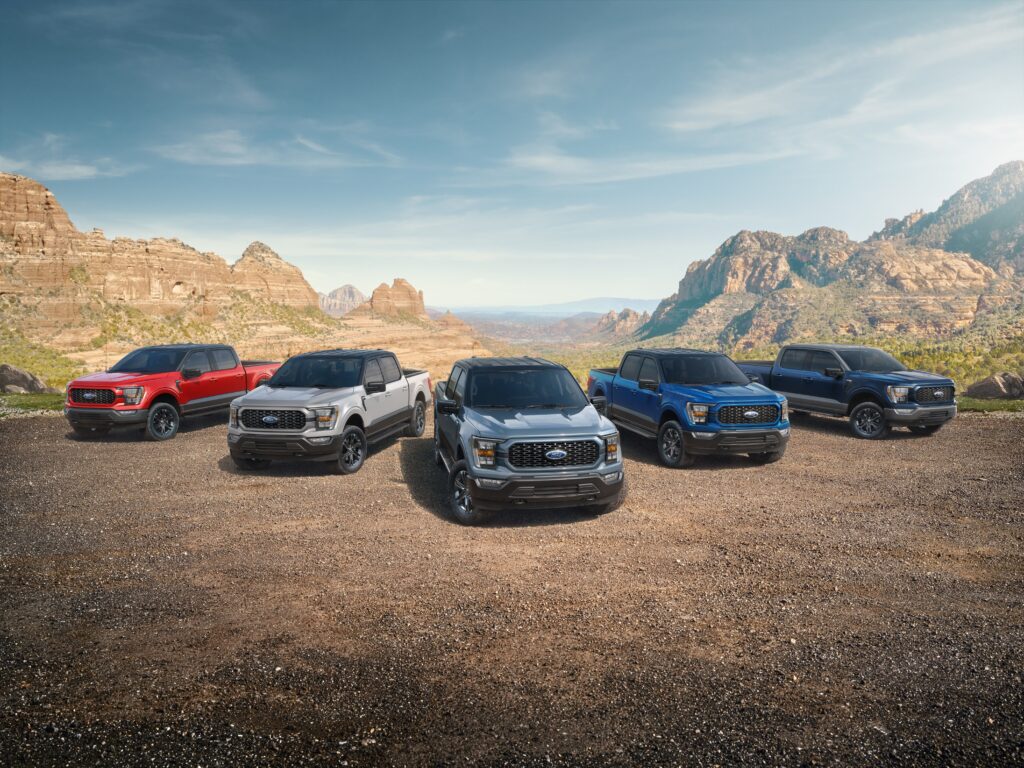Convertible Trucks: 11 Trucks That Chart The History Of The Drop-Top Pickup

Convertible Trucks: 11 Trucks That Chart The History Of The Drop-Top Pickup
A journey across the history of the drop-top truck, from the Ford Model T to the Jeep Gladiator.
Convertible trucks are a peculiar beast of the car world. Dismissed as impractical and often mocked by truck and convertible enthusiasts alike, they have always been regarded as a tiny niche of the automotive landscape. However, for a small subset of drivers, they represent the perfect blend of utility and open-air, road-trip freedom. While there are only two convertible pickup trucks currently on sale (you’ll find them on this list), the others we’ve selected span decades, proving that automotive society has never quite let go of the concept of a convertible pickup truck.
So, without further ado, let’s take our roof off and embark on a journey across the history of this quirky vehicle with 10 of the best of a rare breed.
The very first example of a convertible pickup truck in American automotive history arrived for the 1925 model year when Ford launched a pickup truck version of the Model T Runabout called the Model T Roadster Pickup. It was Ford’s first pickup truck, predating the F-150 and other F-Series pickups, but its claim to fame here is that it had a canvas roof, so the truck version effectively became America’s first convertible pickup. It was a rarity, even among the Model T lineup, since it was only in production for three years before being discontinued. Despite this, it sold en masse, with more than 137,000 units sold in these few years.
At its heart was a 20-horsepower 176 cubic inch (2.9 liter) inline-four, and it had a two-speed planetary transmission.
After the Model T, the idea of the convertible pickup all but disappeared from the US market and the wider automotive industry until the 1960s, when three separate models emerged that brought convertible pickups back into the spotlight. The first was the International Scout, launched in 1961 with a fully removable hard top and a pickup bed. Intended as a rival to the Jeep of the era, you could either get a folding soft-top or removable hardtop, with options of a full-length roof or a half-cab option. The second generation continued this trend until 1980, when the Scout name was put out to pasture.
Volkswagen acquired the rights to the Scout name and will be reviving it as an electric sub-brand, with its first products being an electric SUV and pickup truck this decade. Whether it will continue the legacy of the convertible pickup remains to be seen.
The Scout’s launch prompted two competing models to emerge, the first being the Ford Bronco. In 1965 Ford released a convertible hard-top version of the Ford Bronco, known as the “Sports Utility” pickup, produced from 1966 to 1972. More important was the Bronco Roadster, which officially didn’t have doors at all. It had a bench in the back and the cabin and the open-air cargo area weren’t separated by anything, but you could remove the back seat turning it into an open-air pickup, which could be completely closed in with its canvas roof.
And if you don’t think removing the rear seats constitutes its place as a pickup truck, then we have two arguments for you. First, have you heard of the Subaru B.R.A.T., and second, these guys will build you a Bronco Roadster Pickup restomod.
The second rival launched to combat the Scout was the Jeepster Commando under the Kaiser Jeep brand. An early precursor to the modern Jeep Gladiator. Because it predates the official Jeep brand, many enthusiasts are unaware of its existence. Available in several body styles, the convertible is the one we’re highlighting here, although it could also be had in roofless roadster form. The pinnacle of the lineup was the Revival Jeepster, which had the luxury of a powered roof, whereas the base convertible was far more spartan.
Early models (the C101 from 1966 to 1971) were powered by inline-four and six engines, but the C104 generation (1971-1973) gained access to the AMV 304ci V8, also dropping the Jeepster suffix and going by the Commando nameplate.
After the three models above went out of production, throughout the late 70s, the only convertible pickup trucks you would see on US roads were custom-built, with no mass-produced option available. Eventually, in 1981, Jeep picked up on what could potentially be an unexplored marketing segment and designed a vehicle with the all-terrain versatility of a Jeep and the practicality of a pickup truck: the Jeep Scrambler, also known as the CJ-8.
What set the Scrambler apart from other pickup trucks and off-road vehicles available at the time was the fact that it could be ordered as a soft-top, making it a true convertible pickup truck. The Scrambler enjoyed a five-year production run, ending in 1986, with famous owners including President Ronald Reagan.
Three years later, Dodge also decided to venture into the rarely-explored territory of convertible pickup trucks, and in 1989, the Dodge Dakota Convertible was born. Essentially a fully finished “regular” Dakota, the roof was chopped off courtesy of the American Sunroof Company (ASC) and replaced with a manually operated, removable soft top.
Also known as the Dakota Sport Convertible (since all soft-top Dakotas came equipped with the Sport package as standard), the Dakota was an unusual hybrid between pickup-truck utility and beach-buggy fun, powered by a 3.9-liter V6 with 125 hp. On paper, it should have been a success: blending America’s love of pickup trucks and open-air road trips, the Dodge Dakota convertible was supposed to be a symbol of cool, fun-loving freedom. However, the market had other ideas, and it is believed that Dodge sold less than 4,000, axing the Dakota convertible in 1991, with only eight built that year.
The 1991 Ford Skyranger is one of the rarest convertible trucks in automotive history since it was never commissioned for large-scale production; only 17 examples were ever produced, thanks to the American Sunroof Company, and it is unknown how many of these are still in existence today. ASC created these builds based on regular Rangers, which were turned into convertibles with a removable fabric roof, an angled rollover hoop, and custom Skyranger stripes. They also had a curious rear wing, hampering the practicality of the Skyranger as a functional pickup truck.
A year after the Skyranger, a very different kind of convertible truck appeared on the US market. The AM General Hummer was a barely toned-down civilian version of the military’s High Mobility Multipurpose Wheeled Vehicle (HMMWV, commonly known as the Humvee), made famous in popular culture by Arnold Schwarzenegger and Operation Desert Storm.
With most of its features carried over from its active-duty sibling, the Hummer was a completely different beast from the quirky, carefree Dakota, and even the four-door soft-top version was more utilitarian than fun. Five engine options were available, with the only gas model being a 5.7-liter V8 with a four-speed auto, while the remaining 6.2-, 6.5-, turbo 6.5-, and turbo 6.6-liter V8 engines were diesel.
Despite becoming a pop-culture icon, the Hummer struggled to carve itself a place in the market, and sales began declining in 1995. The 2001 rebadge, initiated by General Motors acquiring the rights to the Hummer name and officially launching it as a brand, provided a slight boost, but eventually, the Hummer left the market for good in 2010, only to be rebooted as an electric sub-brand under GMC…
In the meantime, a convertible truck that couldn’t be further from the Hummer’s rugged practicality had emerged on the market in the form of the Chevrolet SSR (Super Sport Roadster). First launched in 2003 and without a doubt one of the most bizarre vehicles available in the early 2000s, this retro-futuristic homage loosely took styling cues from a 1940s Chevy pickup (the Advance Design).
The SSR was polarising in all aspects, from its looks to its purpose. Combining cutesy, VW Beetle-esque looks with two hot-rod engine choices (a 5.3-liter or 6.0-liter V8 with up to 390 hp), a pickup bed, and a power-folding hardtop roof, the Chevy SSR was the automotive equivalent of a platypus: a confusing mish-mash of contrasting features combined in one package.
The main problem was that none of these features were convincing enough to make the SSR stand out. The design failed to endear itself to the public in the same way that other retro-inspired vehicles (such as the Beetle itself, or the Nissan Figaro) had, the 300-hp V8 on early models wasn’t impressive enough to outshine other similarly-powered options available on the market, and the cargo capacity wasn’t as high as expected of what is supposed to be a pickup truck.
Unsurprisingly, General Motors gave up on the Chevy SSR after three years and less than 25,000 units sold, even going as far as shutting down the factory where the SSR was produced.
Launched in 2019 after an LA Auto Show debut in 2018, the Jeep Gladiator channels the heritage of the CJ8 Scrambler and Jeepster Commando. Designated as a midsize pickup, the Gladiator grafts the rear end of a Ram 1500 onto a Wrangler to create the ultimate go-anywhere pickup truck, especially in Rubicon guise. Like the Wrangler, the roof comes off of this drop-top truck, and you can either use a canvas roof or solid removable panels.
Power comes from either a 3.6-liter Pentastar V6 or a 3.0-liter diesel V6, the latter of which is done for as of the end of 2023. A plug-in hybrid 4xe is expected to join the ranks soon.
The Hummer nameplate made a successful comeback in 2022, not as a standalone brand but as an electric truck under General Motors’ GMC luxury brand. The first model to be built on the Ultium electric platform, the GMC Hummer EV Pickup lived up to the larger-than-life persona of its predecessors, with an insane curb weight, worse fuel economy than actual combustion cars, and a brash, in-your-face design that’s impossible to miss.
With a tri-motor, 1,000-hp powertrain, it’s a mighty thing, and its WTF driving mode (Watts To Freedom) enables a 0-60 mph sprint of three seconds flat. A maximum driving range of 381 miles is achievable with a 246 kWh battery pack (212 kWh usable).
Its convertible pickup truck credentials come from the Infinity Roof, three transparent roof panels that can be removed and stored in the truck’s front trunk.
An honorable mention goes to the one-off, custom-built pickup version of the BMW E30 M3, created in secret by BMW in 1986 to transport parts at the M Division testing facility. Nicknamed Resi, the truck ended up being used regularly for over 25 years, eventually hitting retirement age in 2012.
This quirky prototype didn’t start life as an M3, but rather as an E30 3 Series convertible (hence the narrow body), with M engineers citing the choice was two-fold, first because it already had additional chassis bracing, and second, because it was what they had on hand. In its final form, it retained a canvas top, which suggests it may still be removable. We’ve been unable to confirm this, but we have reached out to our contacts at BMW to see if anyone there knows. Aside from the bodywork, BMW engineers dropped in the M3’s S14 2.3-liter engine with approximately 200 hp on tap.





Responses